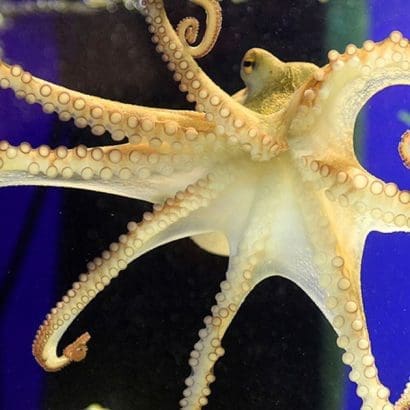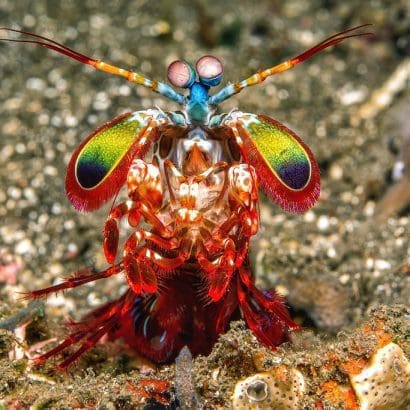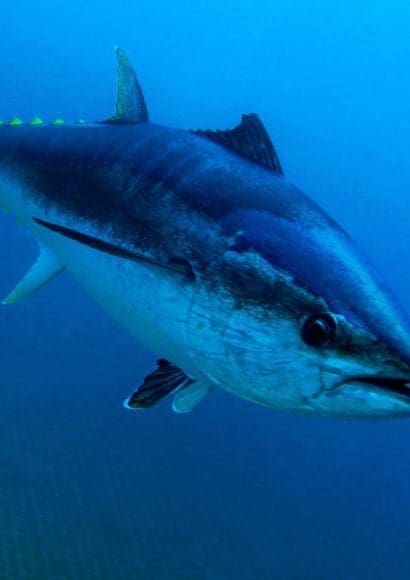
Bluefin tuna, known for its exquisite flavor and versatility in the kitchen, has been a prized species in gastronomy throughout history. However, its increasing popularity has raised concerns about its conservation status. Bluefin tuna faces significant challenges due to overfishing, habitat loss, and illegal, unreported, and unregulated (IUU) fishing, which has led to its inclusion in endangered species lists.
In this article, we will explore why bluefin tuna is so highly valued in gastronomy, highlighting its culinary characteristics and demand in the restaurant and sushi industry. However, we will also address the conservation concerns facing this species, including threats to its population and international conservation efforts implemented to protect it. We will also highlight success stories and organizations working on bluefin tuna conservation. It is crucial to understand the importance of protecting and preserving this iconic species to ensure its survival and maintain a balance between culinary demand and marine conservation.
Contents
Gastronomic Excellence of Bluefin Tuna.
 Bluefin tuna is considered a culinary delicacy in many cultures around the world, especially in Japan, where it is highly valued for its unique flavor and texture. Here are some characteristics that make bluefin tuna a standout choice in gastronomy:
Bluefin tuna is considered a culinary delicacy in many cultures around the world, especially in Japan, where it is highly valued for its unique flavor and texture. Here are some characteristics that make bluefin tuna a standout choice in gastronomy:
If you want to know some recipes with red tuna, I invite you to click here.
Flavor and texture:
Bluefin tuna is known for its intense and delicious flavor, with a tender and juicy texture. The meat of bluefin tuna has a high content of intramuscular fat, which gives it its distinctive taste and juiciness.
Culinary versatility:
Bluefin tuna is used in a wide variety of culinary preparations, from sushi and sashimi to grilling and searing. Its meat can be eaten raw, semi-cooked, or cooked, allowing for a great diversity of uses in the kitchen.
Nutritional value:
Bluefin tuna is an excellent source of high-quality proteins, as well as omega-3 fatty acids, which are beneficial for cardiovascular health. Additionally, it is a good source of essential vitamins and minerals.
Sensory experience:
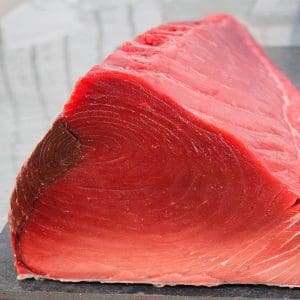 Tasting bluefin tuna is considered a unique gastronomic experience, as its flavor, texture, and aroma are highly appreciated by food connoisseurs. The combination of its smooth flavor and juicy mouthfeel creates an unparalleled sensory experience.
Tasting bluefin tuna is considered a unique gastronomic experience, as its flavor, texture, and aroma are highly appreciated by food connoisseurs. The combination of its smooth flavor and juicy mouthfeel creates an unparalleled sensory experience.
Demand in the restaurant industry:
Bluefin tuna is highly sought after in the restaurant and fine dining industry, making it a valuable ingredient in the creation of gourmet and high-quality dishes. Its exclusivity and gastronomic profile make it a coveted ingredient in many upscale restaurants and gastronomy establishments.
Conservation Concerns.🆘
Despite its culinary excellence, bluefin tuna faces significant conservation concerns due to overfishing and declining populations in some regions of the world. Here are some of the main conservation concerns associated with bluefin tuna:
Overfishing:
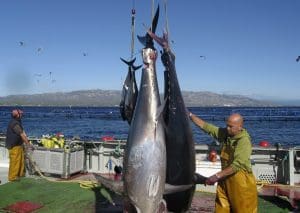 The global demand for bluefin tuna has led to intensive overfishing of this species in many oceans. Overfishing has resulted in a significant decline in bluefin tuna populations in some areas, raising concerns about their ability to sustain at viable levels.
The global demand for bluefin tuna has led to intensive overfishing of this species in many oceans. Overfishing has resulted in a significant decline in bluefin tuna populations in some areas, raising concerns about their ability to sustain at viable levels.
Habitat Loss:
 Degradation of marine habitats, including spawning and feeding areas of bluefin tuna, is also a conservation concern. Habitat loss can negatively impact the ability of bluefin tuna to reproduce and feed properly, which can affect their populations in the long term.
Degradation of marine habitats, including spawning and feeding areas of bluefin tuna, is also a conservation concern. Habitat loss can negatively impact the ability of bluefin tuna to reproduce and feed properly, which can affect their populations in the long term.
Bycatch:
The unintentional capture, or bycatch, of bluefin tuna in fishing gear targeting other species is another conservation concern. This can result in the capture and mortality of bluefin tuna, impacting their populations and overall marine biodiversity.
Inadequate Regulations and Management:
The lack of adequate regulations and poor management of bluefin tuna populations in some regions of the world is also a conservation concern. The absence of effective management measures such as catch limits and restrictions on bluefin tuna fishing can jeopardize the sustainability of their populations.
Illegal and Unregulated Fishing:
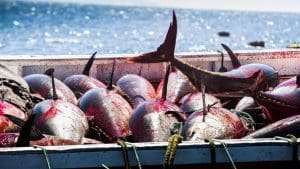 Illegal, unregulated, and unreported fishing of bluefin tuna is also a conservation concern. Illegal and unregulated fishing can undermine conservation and management efforts for this species and contribute to the decline of their populations.
Illegal, unregulated, and unreported fishing of bluefin tuna is also a conservation concern. Illegal and unregulated fishing can undermine conservation and management efforts for this species and contribute to the decline of their populations.
Risks of Illegal Fishing:❌
Illegal fishing is a significant concern in the conservation of fishery resources, including bluefin tuna. Here is some information about the main risks associated with illegal fishing:
- Depletion of Fishery Resources: Illegal fishing can result in unsustainable exploitation of bluefin tuna and other fishery resources. By not complying with regulations and catch limits established by fishery authorities, illegal fishing can quickly deplete bluefin tuna populations, jeopardizing their ability to recover and sustainably manage in the long term.
- Impacts on Marine Biodiversity: Illegal fishing can have negative effects on marine biodiversity, as it can catch and kill other marine species incidentally, such as dolphins, sea turtles, and seabirds, in non-selective fishing gear. This can cause imbalances in marine ecosystems and affect other species that depend on bluefin tuna and their habitat.
- Damages to Economy and Legal Fishing Industry: Illegal fishing can have a negative impact on the economy and the legal fishing industry. By evading regulations and avoiding taxes, illegal fishermen can gain an unfair competitive advantage over legal fishermen, which can affect the economic viability of legal fishing and the sustainability of fishing communities.
- Threats to Food Security and Sustainable Development: Illegal fishing can undermine food security and sustainable development, as it can affect the availability and access to fishery resources for coastal communities and countries that depend on them. In addition, illegal fishing can weaken conservation and management efforts for fishery resources, compromising their long-term sustainability.
- Challenges in Enforcement and Compliance: Illegal fishing can present challenges in the enforcement and compliance of fishing regulations. Lack of proper supervision and limited capacity to enforce regulations can make it difficult to detect and penalize illegal fishing, perpetuating this problem and its negative consequences.
The International Conservation Efforts for Bluefin Tuna.✔
Bluefin tuna is a highly migratory species found in the Atlantic and Mediterranean oceans. Since bluefin tuna populations have declined significantly in recent decades due to overfishing, conservation of bluefin tuna has become an international concern. Here is some information about some of the international conservation efforts for bluefin tuna:
International Commission for the Conservation of Atlantic Tunas (ICCAT):
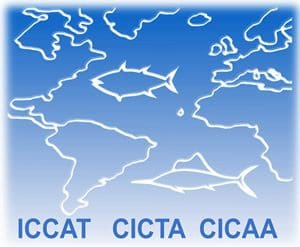 The ICCAT is an intergovernmental organization responsible for the conservation and management of tuna resources in the Atlantic Ocean and Mediterranean Sea. The ICCAT has established conservation and management measures for bluefin tuna, such as reducing fishing quotas, limiting fishing in critical areas and periods of the bluefin tuna’s life, implementing monitoring and control measures, and prohibiting the fishing of juvenile bluefin tuna.
The ICCAT is an intergovernmental organization responsible for the conservation and management of tuna resources in the Atlantic Ocean and Mediterranean Sea. The ICCAT has established conservation and management measures for bluefin tuna, such as reducing fishing quotas, limiting fishing in critical areas and periods of the bluefin tuna’s life, implementing monitoring and control measures, and prohibiting the fishing of juvenile bluefin tuna.
Convention on International Trade in Endangered Species of Wild Fauna and Flora (CITES):
 Bluefin tuna is included in Appendix I of CITES, which means that international trade of bluefin tuna is prohibited except in exceptional cases and under strict conditions. The inclusion of bluefin tuna in CITES is an important measure for bluefin tuna conservation, as it helps reduce the demand and illegal trade of bluefin tuna.
Bluefin tuna is included in Appendix I of CITES, which means that international trade of bluefin tuna is prohibited except in exceptional cases and under strict conditions. The inclusion of bluefin tuna in CITES is an important measure for bluefin tuna conservation, as it helps reduce the demand and illegal trade of bluefin tuna.
Atlantic Tuna Programme (ATP):
The ATP is a program of the United Nations Food and Agriculture Organization (FAO) that aims to improve the management and conservation of tuna resources in the Atlantic Ocean. The ATP has developed regional action plans for bluefin tuna conservation and management, which include measures to reduce bluefin tuna mortality and improve fishing supervision and control.
Bluefin Tuna Conservation Alliance (BTCA):
The BTCA is a global initiative launched by non-governmental organizations (NGOs) and fishing companies with the aim of promoting the conservation and sustainable management of bluefin tuna. The BTCA has developed a bluefin tuna certification program to promote sustainable fishing practices and improve the transparency and traceability of the bluefin tuna supply chain.
The importance of sustainability of bluefin tuna in gastronomy.
 Bluefin tuna is a highly valued species in gastronomy, but its conservation is crucial to ensure its survival and the health of the marine ecosystem it inhabits. Overfishing and illegal fishing have led to the decline of bluefin tuna populations worldwide, which has led to the implementation of conservation measures and the need to balance culinary demand with the conservation of marine species.
Bluefin tuna is a highly valued species in gastronomy, but its conservation is crucial to ensure its survival and the health of the marine ecosystem it inhabits. Overfishing and illegal fishing have led to the decline of bluefin tuna populations worldwide, which has led to the implementation of conservation measures and the need to balance culinary demand with the conservation of marine species.
Sustainability is essential to ensure that marine species are available for future generations and that the gastronomic industry can continue to grow in a sustainable way. Sustainable and responsible fishing, along with the promotion of culinary practices that encourage the use of less-known and less-exploited species, are crucial to ensure the conservation of marine species.

